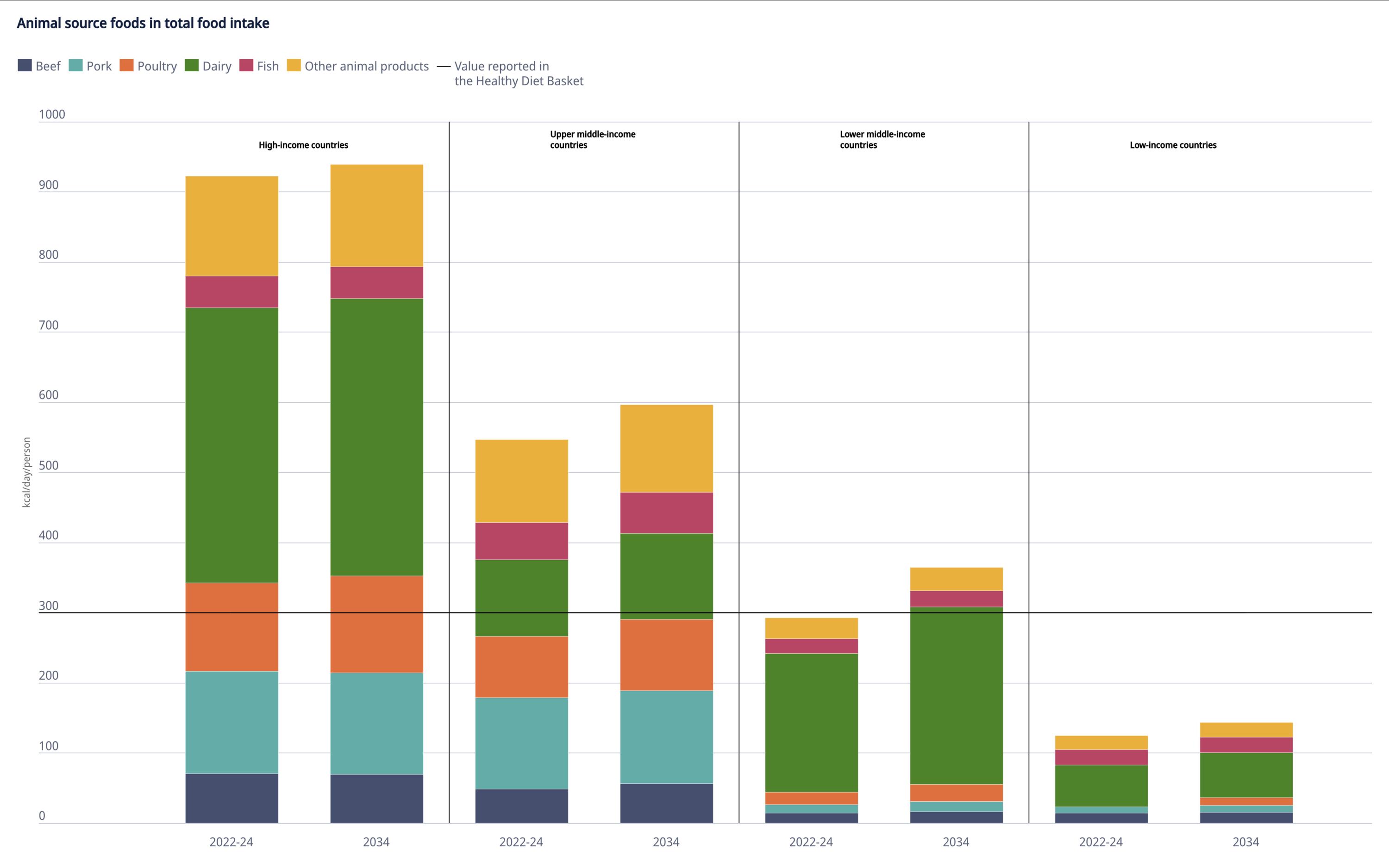However, the persistent nutritional gaps and the growing environmental pressures reveal a complex path ahead, according to a new study carried out by the UN Agriculture and Food Organization (FAO) and the Organization for Economic Cooperation and Development (OECD), a forum of influential international policies.
He Agricultural Perspective 2025-2034Run on Tuesday, it projects a six percent increase in world consumption per capita of animal food for 2034: beef, pork, poultry, fish, dairy and other animal products.
The trend is more pronounced in the lowest average income countries, where it is expected that the intake will increase by 24 percent, far exceeding the global average.
“These projections point to better nutrition for many people in developing countries.“Said Qu Dongyu, general director of the FAO.
Agricultural Perspective 2025-2034
Increase in income, better diets, but not for all
He The increase in consumption in average income economies is greatly attributed to the increase in disposable income, changing dietary preferences and urbanization. In these countries, it is projected that the daily per capita intake of animal food will reach 364 kilocalias, exceeding the reference point of 300 kcal.
At the same time, Consumption in low -income countries will remain low, reaching only 143 kcal per day, less than half of the amount considered necessary for a healthy diet -Stesting the marked inequalities in the access to nutrient -rich diets and the challenges ahead to ensure that all are sure of food.
Mr. QU urged greater efforts to ensure that people in the countries with less income also benefit from better nutrition and food security.
Production expansion but increased emissions
To meet the growing demand, The global production of agriculture and fish is expected to increase by 14 percent in the next decadelargely driven by productivity gains in middle income nations.
The production of meat, dairy and eggs is expected to grow by 17 percent, while it is projected that total cattle inventories expand by seven percent.
However, these profits have an environmental cost: Direct emissions of greenhouse gases (GHG) of agriculture will increase by six percent by 2034, despite the improvements in the intensity of emissions.
As the production becomes more efficient, the emissions generated per unit of production will decrease, but the general footprint will still grow unless additional measures are taken.

Agricultural Perspective 2025-2034
Other key findings
- Cereal yields grow 0.9 percent annually, with a harvested area that expands only 0.14 percent per year, half of the rhythm of the last decade
- By 2034, 40 percent of cereals will directly go to human consumption, 33 percent to animal feed and the rest to biofuels and industry
- The demand for biofuels will increase by 0.9 percent per year, directed by Brazil, India and Indonesia
- The flock of beef of sub -Saharan Africa that is projected that will grow 15 percent, although productivity remains only a tenth of the North America
- India and Southeast Asia will boost 39 percent of the growth of world consumption by 2034; China's participation fell to 13 percent of 32 percent
- High income countries to see the fall in per capita intake and sweeteners due to health trends and policy changes
A mutual benefit: more food, less emissions
The report describes a scenario in which food improves for all, and agricultural emissions are reduced by up to seven percent below current levels by 2034.
Achieving this double result would require large investments to improve productivity, together with the widespread adoption of existing low -emission technologies, such as precision agriculture, improved livestock feeding and prioritized nutritional production.
Future progress will depend on a combination of policy coordination, technological innovation and specific investments, especially in countries where the gap between demand and nutritional value is marked.
“We have the tools to end hunger and increase global food security“Mathias Cormann, Secretary General of the OECD said.
“Well coordinated policies are needed to keep world food markets open, while promoting long -term productivity improvements and sustainability in the agricultural sector.”
Fundamental role for global trade
The perspective also reiterates the importance of trade, since 22 percent of all calories food will have crossed international borders by 2034.
“International trade will remain indispensable for the global agricultural sector”The report emphasized.
“Multilateral cooperation and an agricultural trade based on rules are essential to facilitate these commercial flowsbalancing food deficits and surpluses in all countries, stabilizing prices and improving food security, nutrition and environmental sustainability. “












